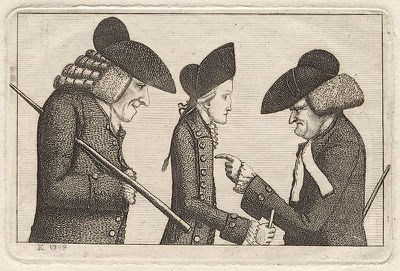Annotation:Miss Burnet's Reel: Difference between revisions
No edit summary |
No edit summary |
||
| Line 21: | Line 21: | ||
<br> | <br> | ||
See also Robert Mackintosh's reel "[[Miss Burnet of Monboddo]]" and Alexander Campbell's strathspey "[[Miss Burnets of Monbodo's]]." | See also Robert Mackintosh's reel "[[Miss Burnet of Monboddo]]" and Alexander Campbell's strathspey "[[Miss Burnets of Monbodo's]]." | ||
|f_source_for_notated_version= | |f_source_for_notated_version= | ||
|f_printed_sources=Alburger ('''Scottish Fiddlers and Their Music'''), 1983; Ex. 58, p. 86 ('A' part only). | |f_printed_sources=Alburger ('''Scottish Fiddlers and Their Music'''), 1983; Ex. 58, p. 86 ('A' part only). | ||
Latest revision as of 07:08, 6 April 2023
X:1 T:Miss Burnet's Reel M:C L:1/8 R:Strathspey K:G (D<G) (G>g) d<GTB2|D<GG<g d<GB<g|(D<G) (G>g) d>G TB2|(c>A)TB>G TA>GE<A:|
MISS BURNET'S REEL. AKA and see "Miss Jane Stewart (1)," "Miss Jane Stewart's Strathspey--Pittyvaich (1)," "Miss Jane Campbell's Strathspey," "Johnny Pringle" {Gow's title}. Scottish, Strathspey. G Major. Standard tuning (fiddle). AAB. Composed by William Marshall (1748-1833) and first published in an attachment (c. 1788) to his 1781 First Collection. In 1822 Marshall included it in his 1822 collection under the title "Miss Jane Stewart's Pittyvaich." The strathspey was called "Johnny Pringle" by Gow when he published it in his Repository, Part Third (1806), undoubtedly in honor of fiddler-composer John Pringle who had published the melody in 1801 under the title "Miss Jane Campbell's Strathspey." Alburger points out that the octave slur in the first measure forces movement to the third position to accomplish.

Thy daughters bright thy walks adorn,
Gay as the gilded summer sky,
Sweet as the dewy milk-white thorn,
Dear as the raptured thrill of joy!
Fair Burnet strikes the adoring eye,
Heaven's beauties on my fancy shine;
I see the Sire of love on high,
And own his work indeed divine."
His eldest daughter was married to Kirkpatrick Williamson, Esq., keeper of the outer house rolls who had been clerk to his lordship, and was eminent as a Greek scholar.
See also Robert Mackintosh's reel "Miss Burnet of Monboddo" and Alexander Campbell's strathspey "Miss Burnets of Monbodo's."

